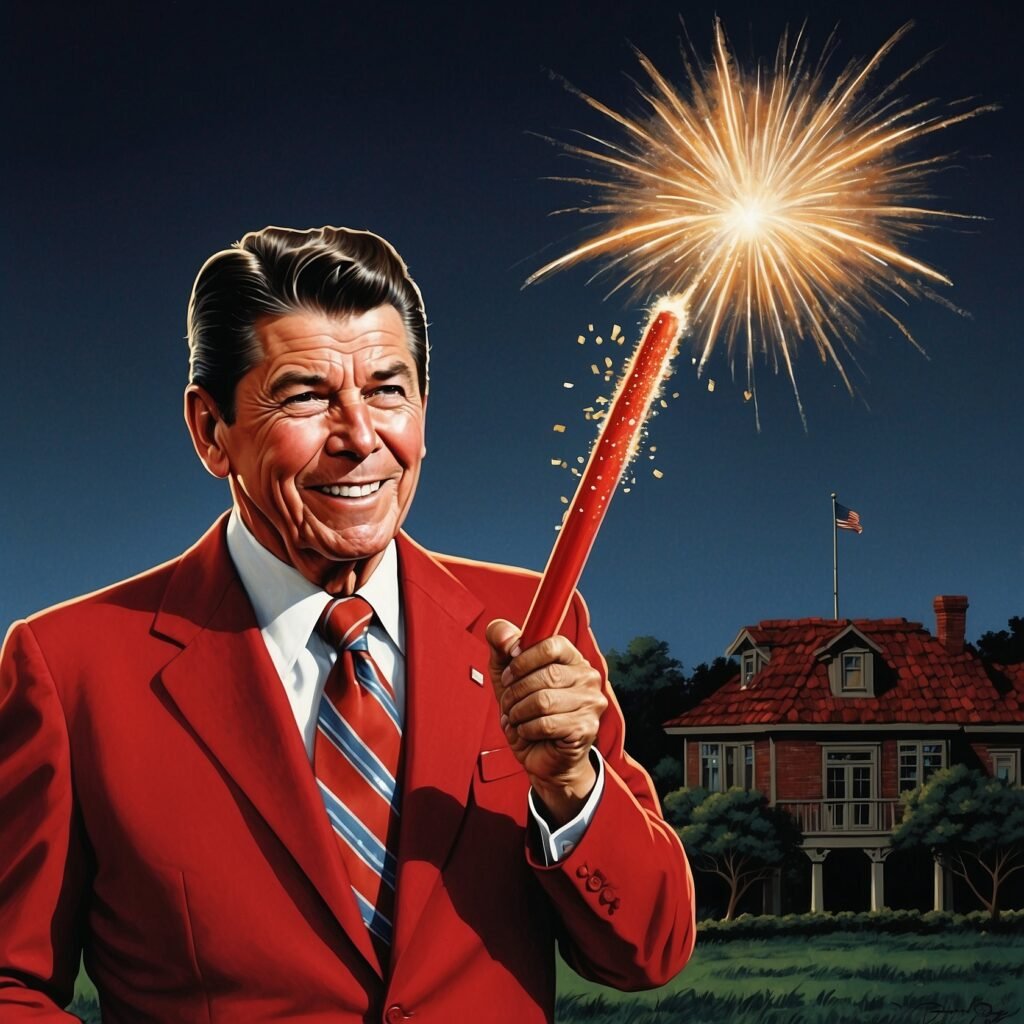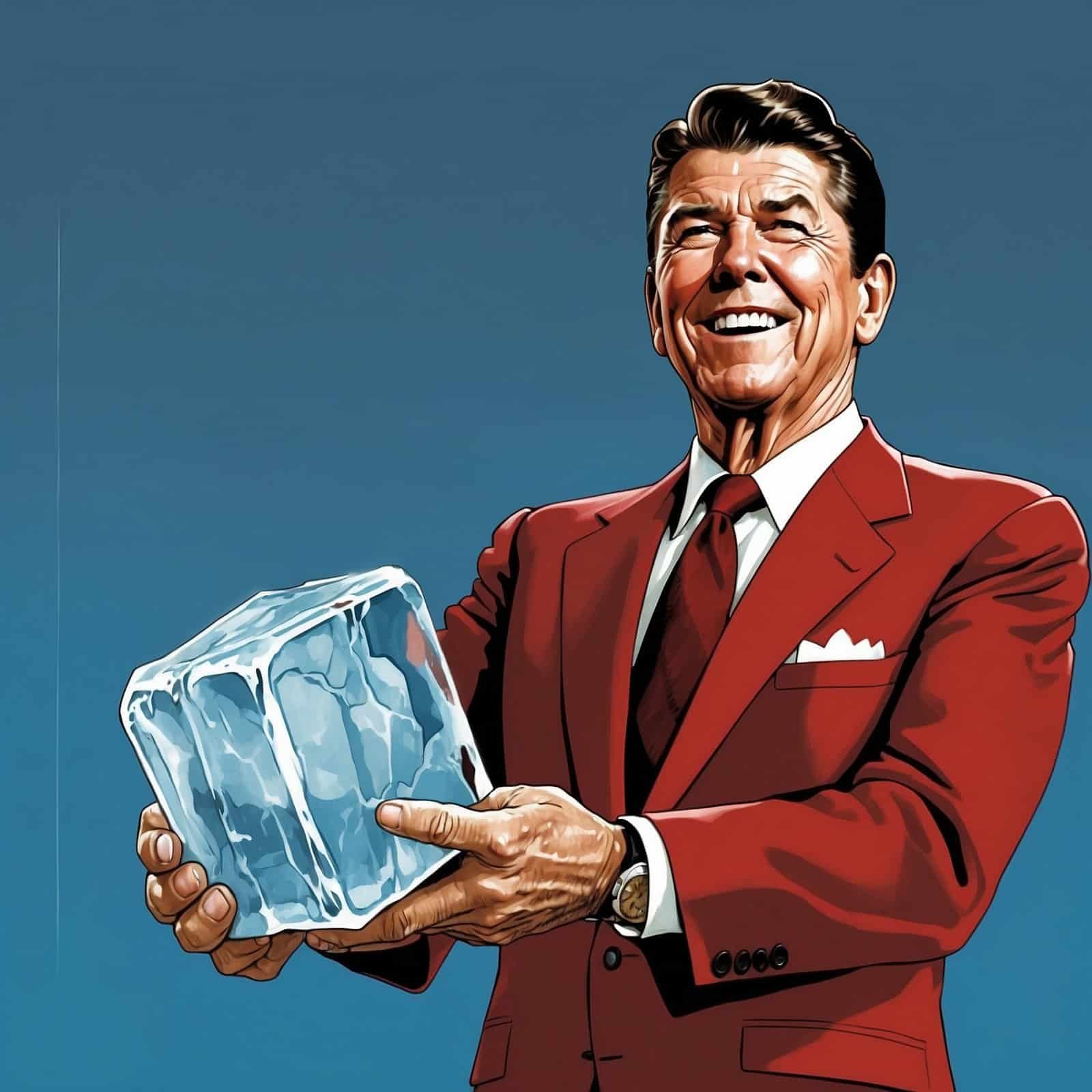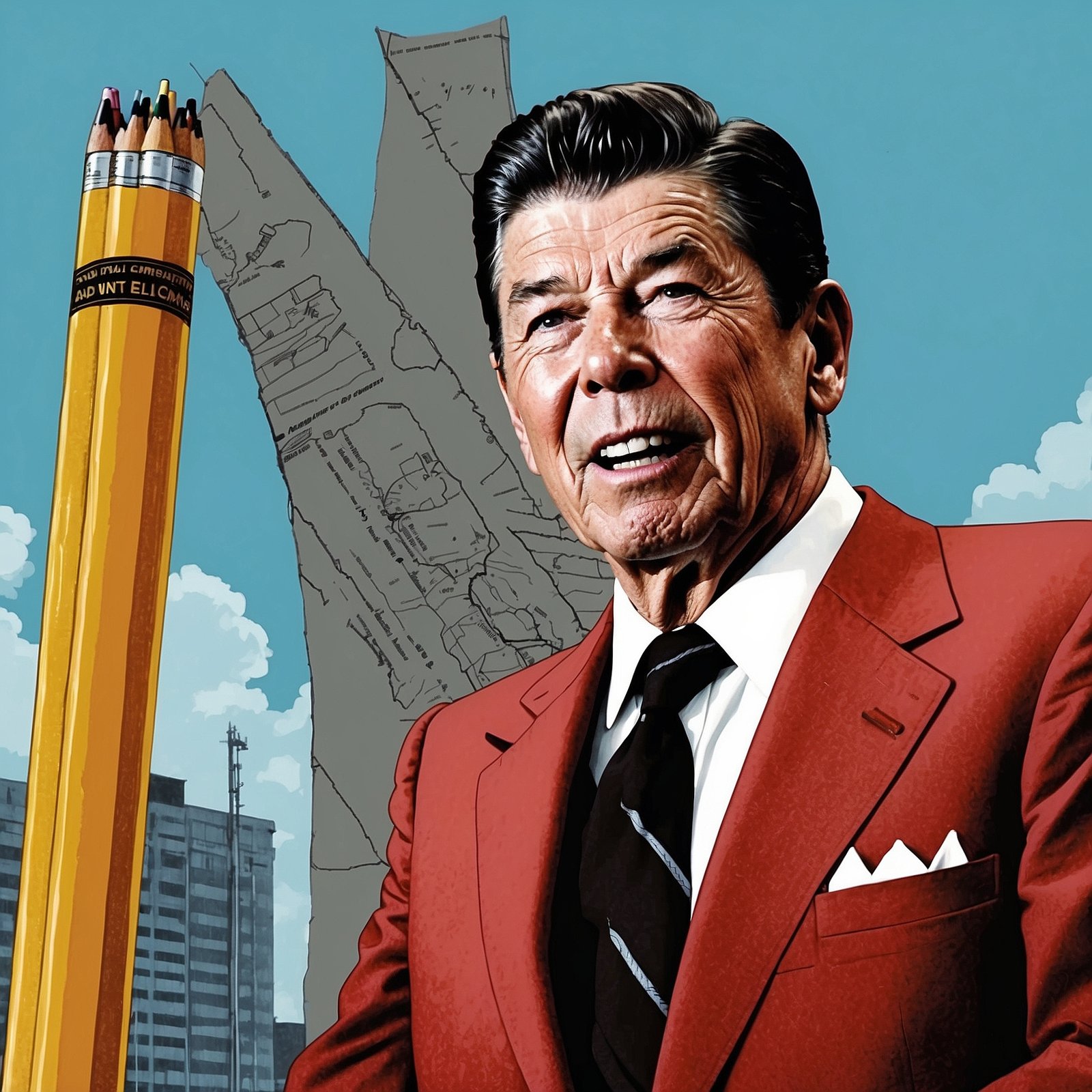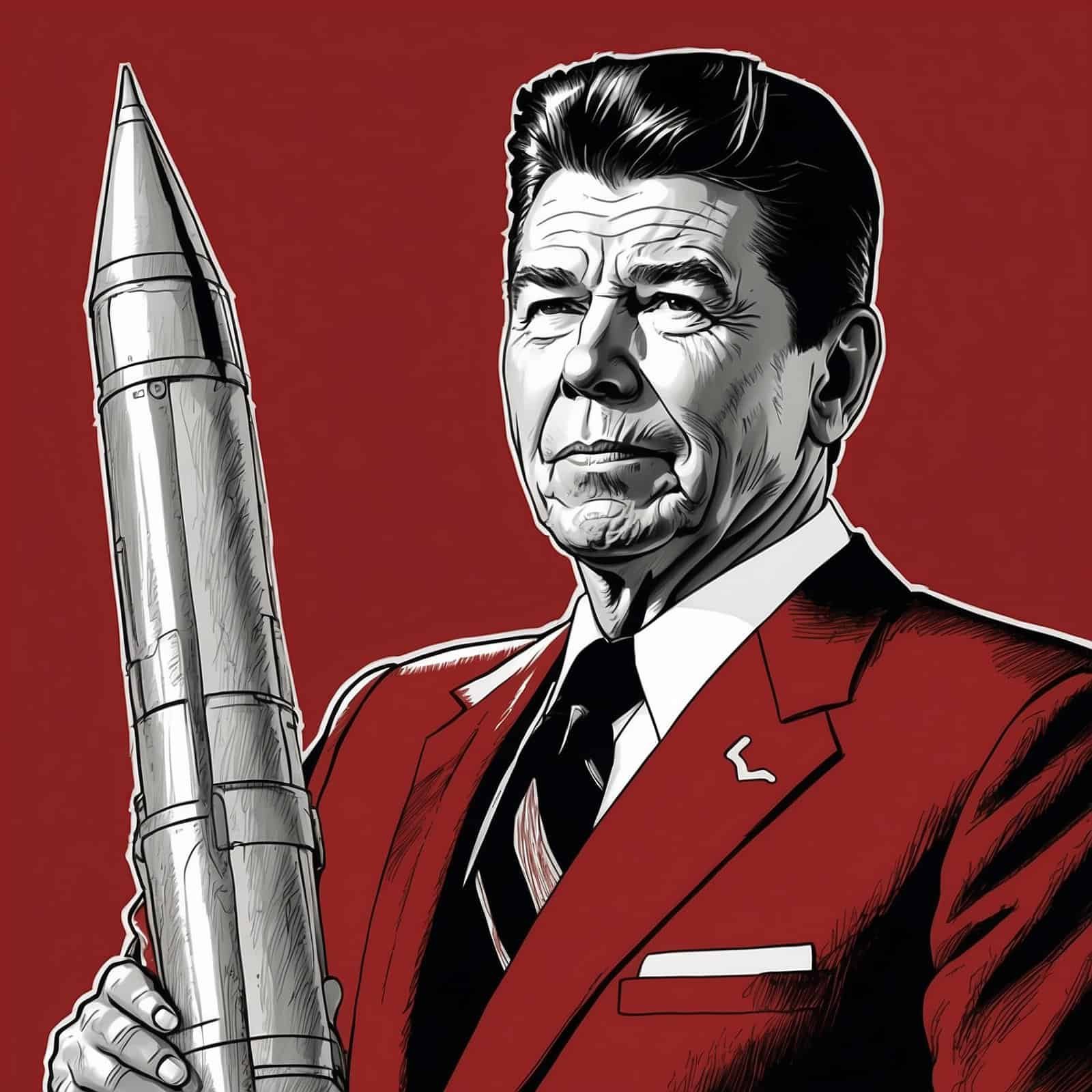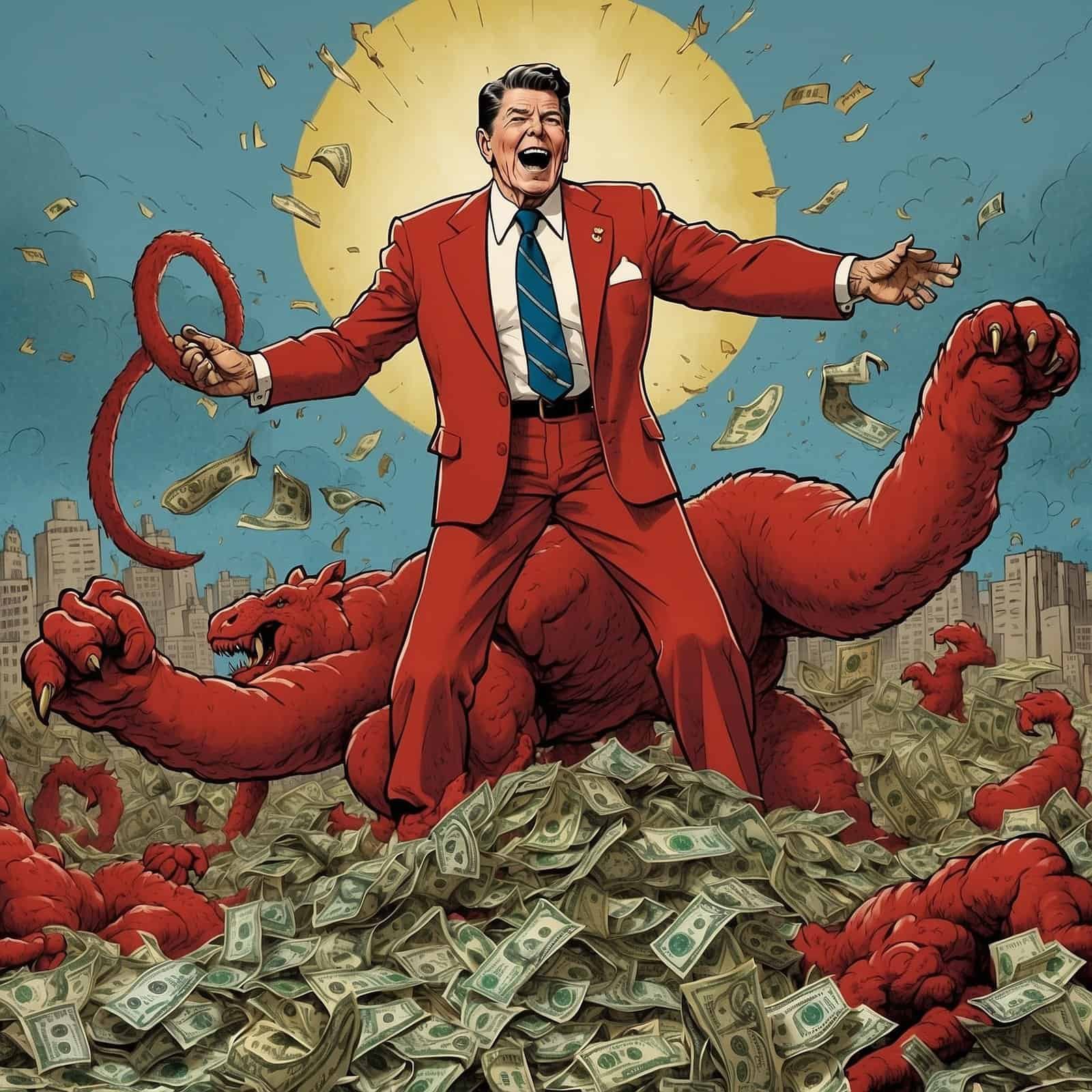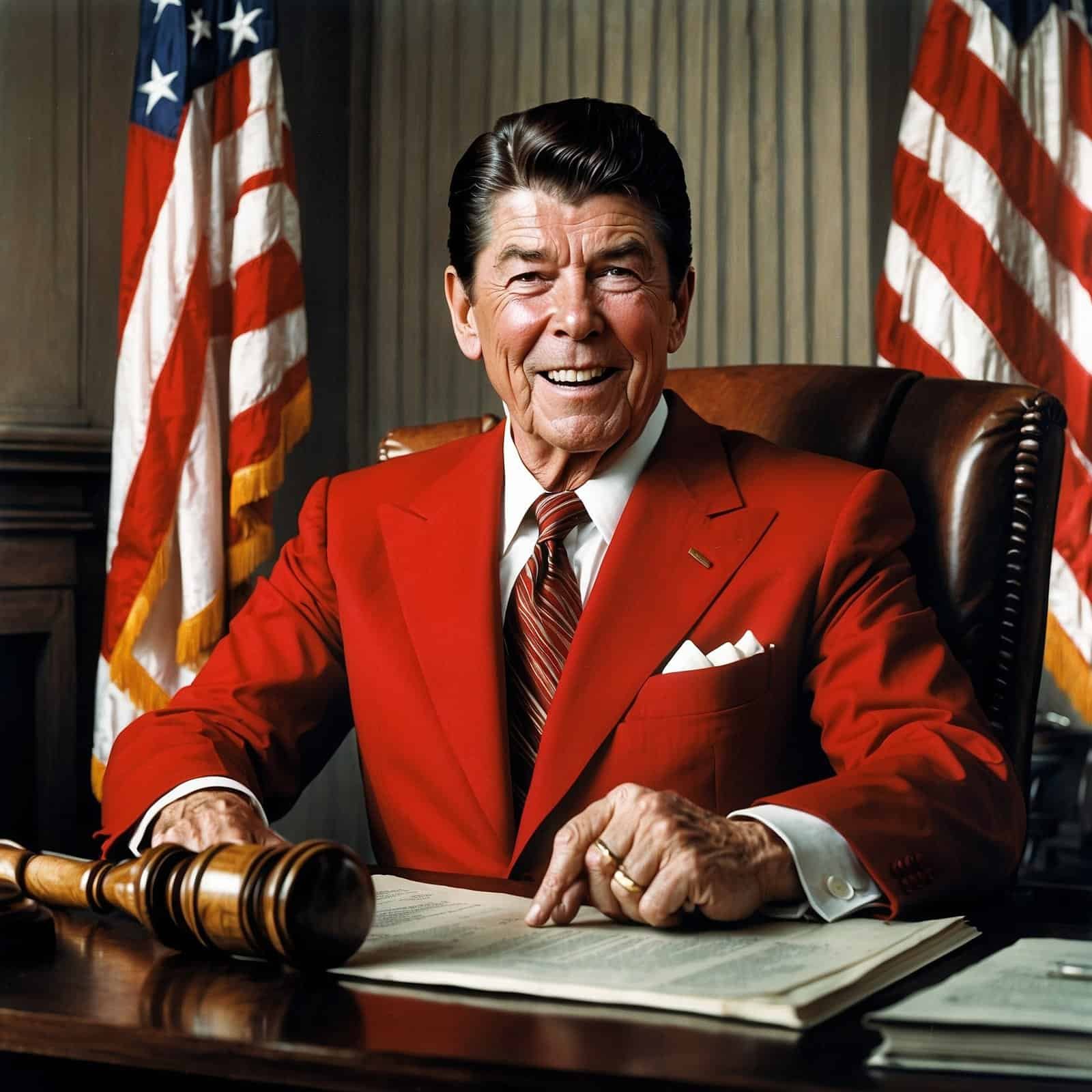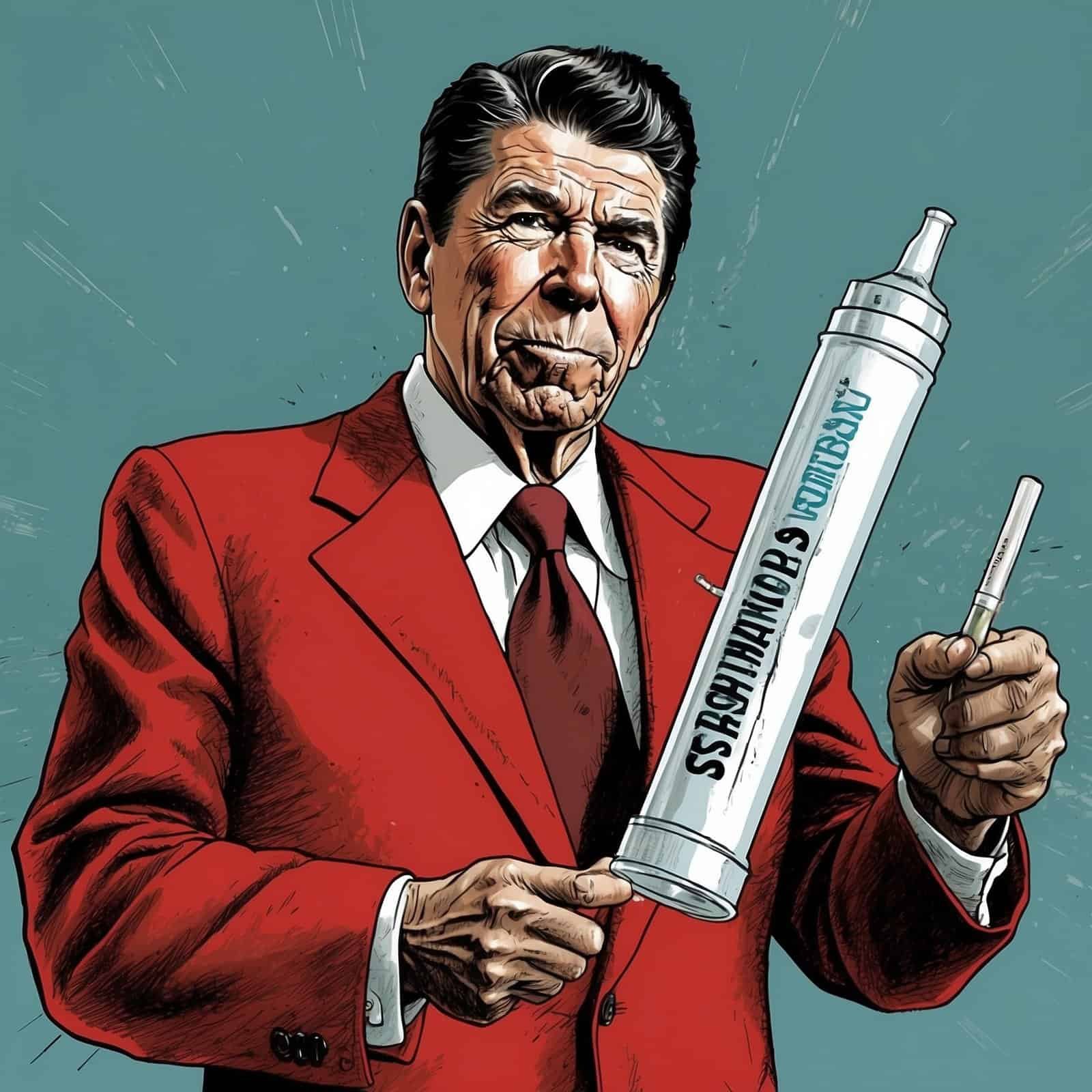So, let’s rewind the clock back to 1981. Here comes Ronald Reagan, armed with a grin wider than the Grand Canyon and a mission to revive an economy that was limping worse than a one-legged pirate. Reaganomics burst onto the scene with all the subtlety of a fireworks show on the Fourth of July, and boy, did it make an impression!
This whole shindig, nicknamed Reaganomics, was based on four key pillars: tax cuts, reduced social spending, deregulation, and the magic of the free market. Think of it as the ultimate economic shake-up party with Uncle Sam as the host. Reagan believed that by cutting taxes, particularly for the wealthier folks and businesses, you’d unleash a tidal wave of investment and job creation. Trickle-down economics at its finest! Conservatives across the country cheered the prospect of less government meddling and more financial freedom.
The Four Pillars of Reaganomics
Reaganomics’ Four-Point Plan
- 🔹 Tax Cuts: Slashing rates to boost spending and investment
- 🔹 Reduced Social Spending: Trimming the fat from government programs
- 🔹 Deregulation: Cutting red tape to free up businesses
- 🔹 Free Market Magic: Letting capitalism work its wonders
First up, those tax cuts. In 1981, Reagan signed into law the Economic Recovery Tax Act, a move that sliced the top income tax rate from a sky-high 70% down to 50%, and that’s not peanuts! By 1986, it dropped even further to 28%. The goal? Let people keep more of their own hard-earned dough and watch as they pump it back into the economy.
But wait, there’s more! Reagan wanted to get rid of the shackles—uh, I mean regulations—that he believed were stifling businesses like a straitjacket. Picture this: fewer bureaucratic obstacles and reams of paperwork, and more room for American entrepreneurship to spread its wings and soar. It was like cutting down a forest of red tape to pave the way for, well, red, white, and blue prosperity!
Trimming the Fat: Social Spending Cuts
Of course, we can’t overlook the idea of reducing social spending. Critics might’ve argued that safety nets were being trimmed down to threads, but Reagan saw bloated government programs as barriers to growth. His administration aimed to encourage personal responsibility and reduce dependency on Uncle Sam. It’s kind of like teaching a man to fish instead of just handing him a fish every day.
Now, imagine if today’s Democrats had their way back then. We’d probably have ended up with a “Fish Handout Administration” and a “Department of Free Lunches.” Thank goodness Reagan had the foresight to put faith in the American people rather than Big Government!
The Reagan Revolution: Economic Fireworks
Now, what about the results? Well, the economy did eventually bounce back, with growth rates hitting over 4% during several years of Reagan’s presidency. Unemployment took a nosedive from a whopping 10.8% in 1982 to just 5.3% in 1989. The stock market, riding high on investor confidence, saw its value more than double during the Reagan years. It was as if Reaganomics breathed new life into the American Dream, revving up the engine of prosperity and opportunity.
Reagan’s Economic Triumph
| Metric | Before Reagan | After Reagan |
|---|---|---|
| Unemployment Rate | 10.8% (1982) | 5.3% (1989) |
| Top Income Tax Rate | 70% | 28% |
| Stock Market Value | 100% (baseline) | Over 200% |
The belief was that a rising tide lifts all boats, and Reaganomics aimed to create a wave strong enough to lift even the sturdiest of ships. It’s worth noting that while liberals cried foul over an increasing deficit, they’ve since shown they’re not exactly penny-pinchers themselves. Just look at the spending sprees during the Obama and Biden administrations! At least Reagan’s deficits came with a side of economic boom, unlike the modern left’s “spend now, worry never” approach.
Reaganomics: A Conservative Masterpiece
Let’s be frank: Reaganomics wasn’t just an economic policy, it was an embodiment of conservative values. It highlighted the belief in personal freedom, responsibility, and limited government intervention, which resonate deeply with conservative and Republican ideals. It’s like a manifesto that insists on believing in the individual’s power to create, innovate, and prosper without Big Brother’s hand in every cookie jar.
Compare that to the left’s current economic playbook, which seems to involve taxing success, regulating creativity into submission, and turning the American dream into a government-issued participation trophy. Reagan would be rolling in his grave!
Conclusion: The Reagan Legacy
So there you have it! Reaganomics was Ronald Reagan’s bold bet on the American spirit. Was it perfect? Maybe not. Did it create a boom? Absolutely! By championing lower taxes, fewer regulations, and fostering a bustling free market, Reagan reminded us all that sometimes, less government and more freedom is the best recipe for economic dynamism.
In an era where some politicians seem to think the answer to every problem is more government, bigger spending, and higher taxes, it’s refreshing to look back at Reagan’s approach. He trusted in the ingenuity and drive of the American people, not in the wisdom of bureaucrats.
Here’s to the man who turned economic plans into an American renaissance—cheers to Reaganomics! And let’s hope today’s leaders can take a page from the Gipper’s book. After all, in the words of Reagan himself, “The nine most terrifying words in the English language are: I’m from the government, and I’m here to help.” Amen to that!
